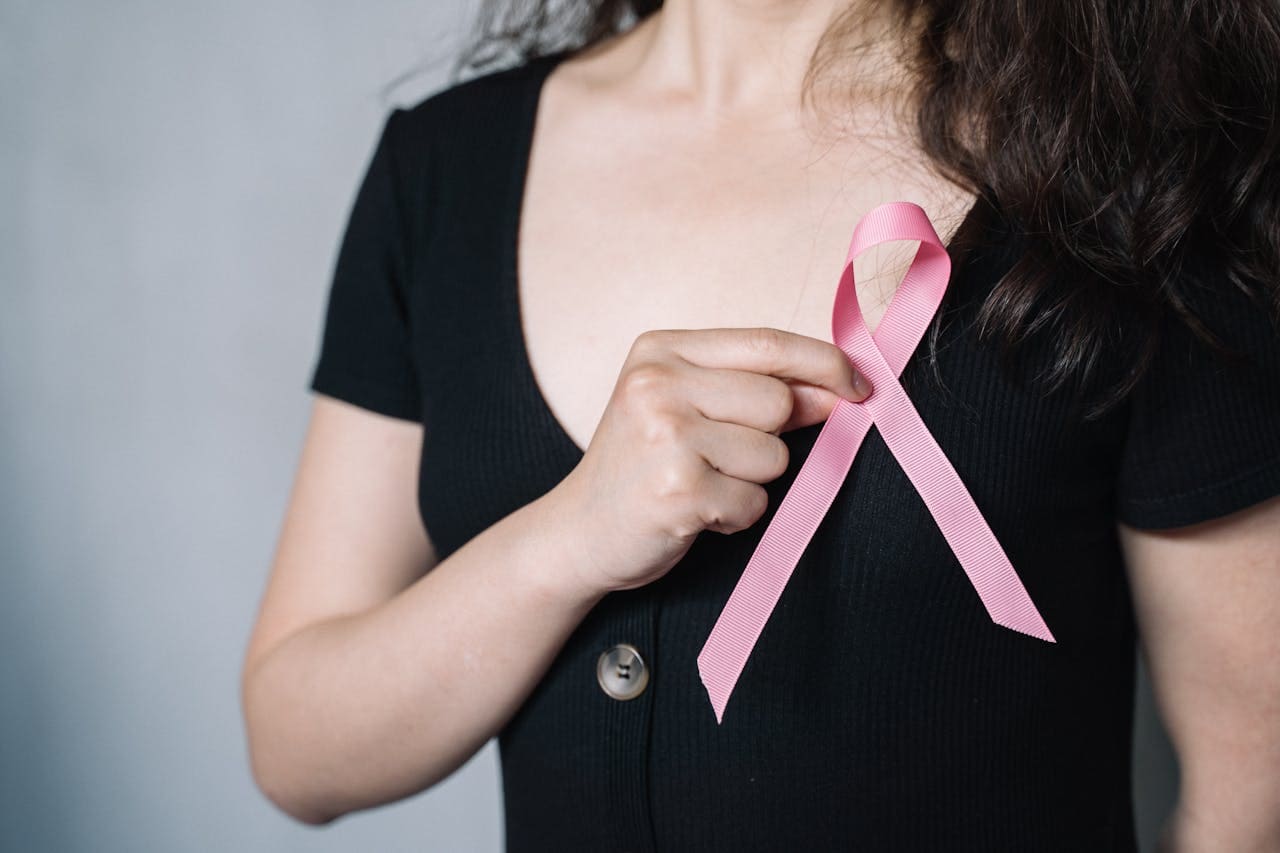
October, Breast Cancer Awareness, and a New Rule
By Ann Constantino,
Photo by Anna Tarazevich.
According to the American Cancer Society, 13% of American women will develop breast cancer in their lifetimes. Every October we are reminded of how prevalent the devastating disease is when we see pink ribbons, pink signage, pink garments, pretty much anything that can be made pink plastered everywhere throughout the month. Occurring at a rate of one out of every 8 women means it’s highly likely that every one of us has either had a friend or loved one get the terrifying diagnosis, or knows someone who has died, is currently undergoing treatment, or has survived breast cancer.
Breast cancer comprises 30% of all new cancer diagnoses each year in women in the US.
While pre-metastatic (meaning no spread to other regions of the body) breast cancer is not the death sentence it once was due to improved treatment options and more widespread screening, the disease remains the most diagnosed cancer in American women. Breast cancer comprises 30% of all new cancer diagnoses each year in women in the US.
In 2024, it is predicted that there will be over 310,000 new cases of invasive breast cancer, and over 42,000 deaths from the disease. Another 56,000 cases of “in situ” breast cancer will be diagnosed, a non-invasive and almost always curable, “stage 0” form of the disease.
New FDA rules for mammography reports
In March of last year, the US Food and Drug Administration (FDA) issued a rule affecting the Mammography Quality Standards Act (a measure passed by congress in 1992 to ensure that all people have access to early screening and detection). The new rule requires anyone screened by mammography be notified of her breast density in the letter sent home with the mammogram results.
As of September of 2024, mammography reports mailed to patients after screening must include not only categories of classification of findings for cancer which range from “negative” through “highly suspicious of malignancy” and beyond, but also a report classifying breast density into four categories:
- The breasts are entirely fatty (no density)
- There are scattered areas of fibroglandular density
- The breasts are heterogeneously dense, which may obscure small masses.
- The breasts are extremely dense, which lowers the sensitivity of mammography.
Understanding breast density and risk factors
Dense breasts are believed to be a risk factor for breast cancer beyond the fact that the condition obscures findings made through mammography, and nearly half of women over 40 have dense breasts. The medical community is divided about whether women with dense breasts should receive further screening such as MRI or ultrasound to detect malignancies ordinary mammography cannot see.
Opponents of further screening cite lack of evidence that it saves lives and is outweighed by “over-diagnosis” and other factors such as unnecessary stress and expense of other procedures. Often the recommendation is to get a second, more sophisticated “3D” mammogram, known as breast tomosynthesis that can better detect worrisome masses where there is concerning breast density. SoHum Health has already acquired this cutting-edge technology and women getting their mammograms in Garberville automatically receive the updated screening.
Genetic factors are often responsible for the incidence in younger women.
Other doctors say that not offering further screening to women with dense breasts leaves them feeling powerless, stressed, and confused about what to do next. Many of the more sophisticated screenings involve costly technology beyond the reach of many patients or unavailable in many areas, especially in rural America.
The letters sent to women will advise those with dense breasts to discuss with their provider the best path forward, taking in their individual and family history and other risk factors.
Even as survival rates improve, the occurrence of breast cancer diagnosis has continued to rise at a rate of 1% each year since 2012. Breast cancer is the leading cause of cancer death in women aged 20-39. Genetic factors are often responsible for the incidence in younger women.
Genetics, family history, personal history, dense breasts, previous treatment by radiation, onset of menses before age 12, and late menopause are all risk factors we are powerless to change.
Taking action to lower your risk
However, there are many lifestyle changes we can make to lower the overall risk of developing breast cancer. Be physically active. Maintain a healthy weight. Curb alcohol consumption. And getting a 3D mammogram annually (for women 40+) increases the chances of detecting breast cancer earlier when treatment is likely to be more effective and less invasive.
If you get your post-mammogram letter and find out you have dense breasts, see your provider to go over the options you have for further screening or taking a less aggressive approach. Make the recommended lifestyle changes. If you want to know more about getting a 3D mammogram at SoHum Health, call (707) 923-3921 and ask to speak with their mammographer, Lora Simone. Then this October you can wear pink to show solidarity with your many sisters in this struggle, you’ll know you’ve done everything you can to avoid this dreaded disease.
Ann Constantino, submitted on behalf of the SoHum Health’s Outreach department.
Related: News, Women's Health